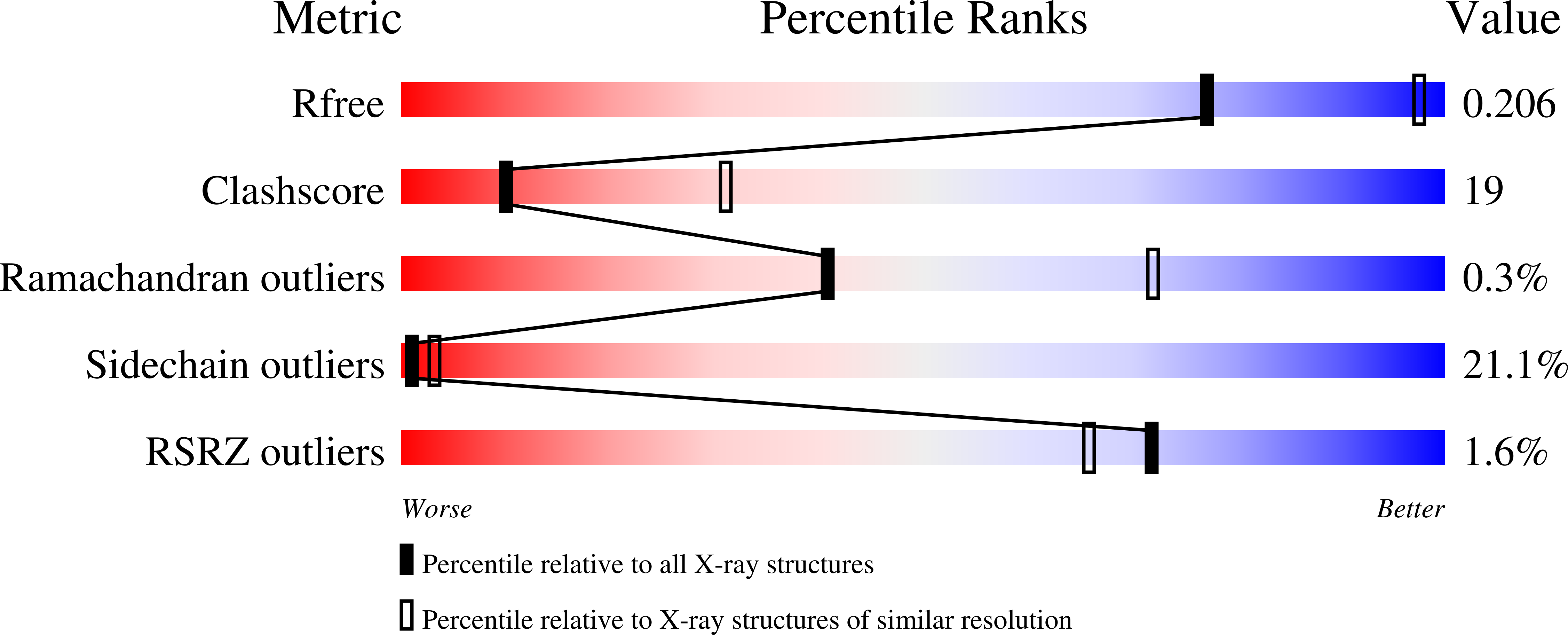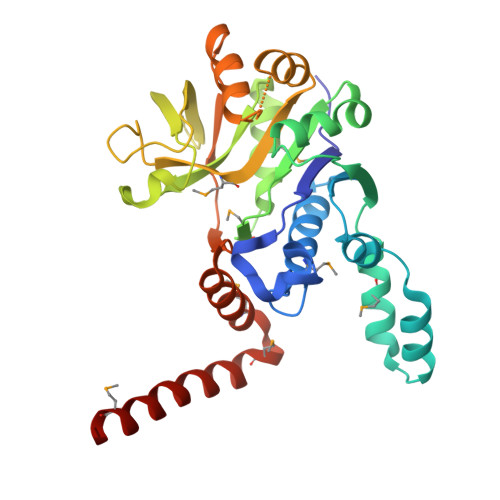Bacillus subtilis YngB contributes to wall teichoic acid glucosylation and glycolipid formation during anaerobic growth.
Wu, C.H., Rismondo, J., Morgan, R.M.L., Shen, Y., Loessner, M.J., Larrouy-Maumus, G., Freemont, P.S., Grundling, A.(2021) J Biol Chem 296: 100384-100384
- PubMed: 33556370
- DOI: https://doi.org/10.1016/j.jbc.2021.100384
- Primary Citation of Related Structures:
7B1R - PubMed Abstract:
UTP-glucose-1-phosphate uridylyltransferases are enzymes that produce UDP-glucose from UTP and glucose-1-phosphate. In Bacillus subtilis 168, UDP-glucose is required for the decoration of wall teichoic acid (WTA) with glucose residues and the formation of glucolipids. The B. subtilis UGPase GtaB is essential for UDP-glucose production under standard aerobic growth conditions, and gtaB mutants display severe growth and morphological defects. However, bioinformatics predictions indicate that two other UTP-glucose-1-phosphate uridylyltransferases are present in B. subtilis. Here, we investigated the function of one of them named YngB. The crystal structure of YngB revealed that the protein has the typical fold and all necessary active site features of a functional UGPase. Furthermore, UGPase activity could be demonstrated in vitro using UTP and glucose-1-phosphate as substrates. Expression of YngB from a synthetic promoter in a B. subtilis gtaB mutant resulted in the reintroduction of glucose residues on WTA and production of glycolipids, demonstrating that the enzyme can function as UGPase in vivo. When WT and mutant B. subtilis strains were grown under anaerobic conditions, YngB-dependent glycolipid production and glucose decorations on WTA could be detected, revealing that YngB is expressed from its native promoter under anaerobic condition. Based on these findings, along with the structure of the operon containing yngB and the transcription factor thought to be required for its expression, we propose that besides WTA, potentially other cell wall components might be decorated with glucose residues during oxygen-limited growth condition.
Organizational Affiliation:
Section of Molecular Microbiology and Medical Research Council Centre for Molecular Bacteriology and Infection, Imperial College London, London, United Kingdom.















